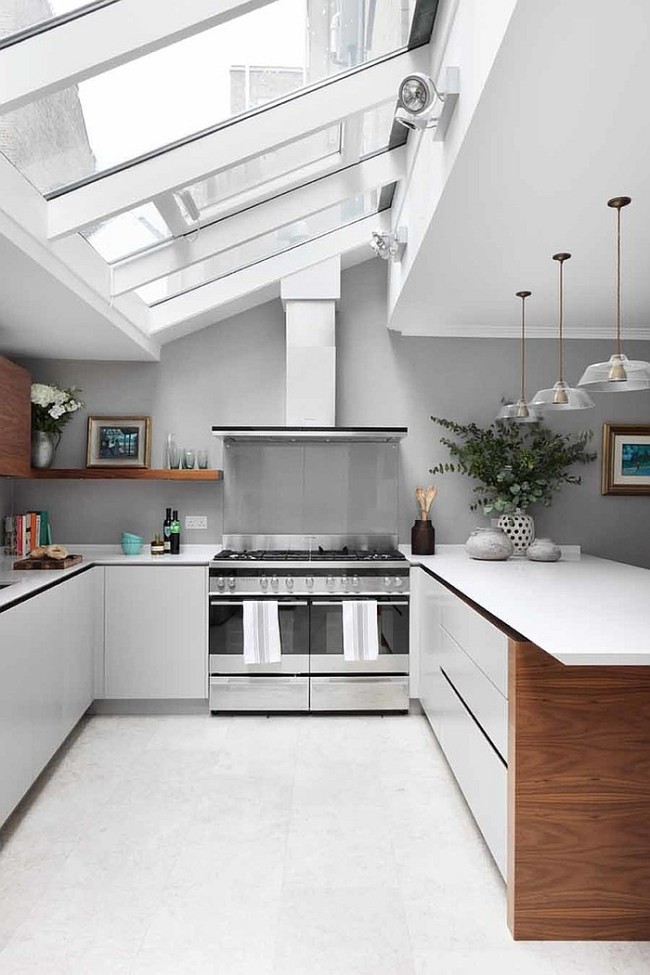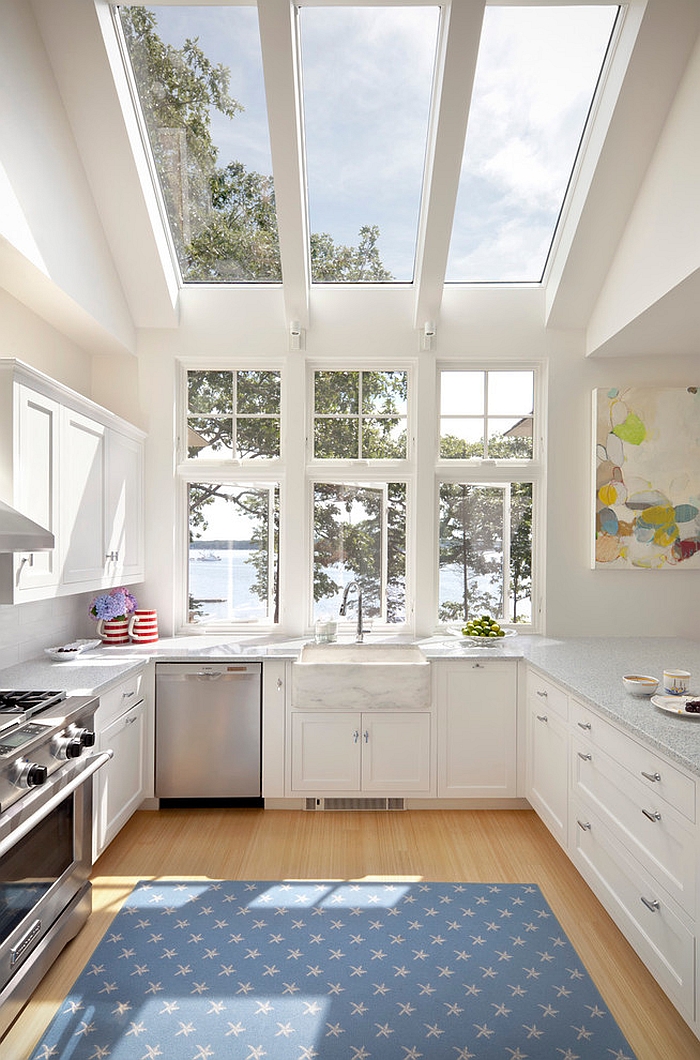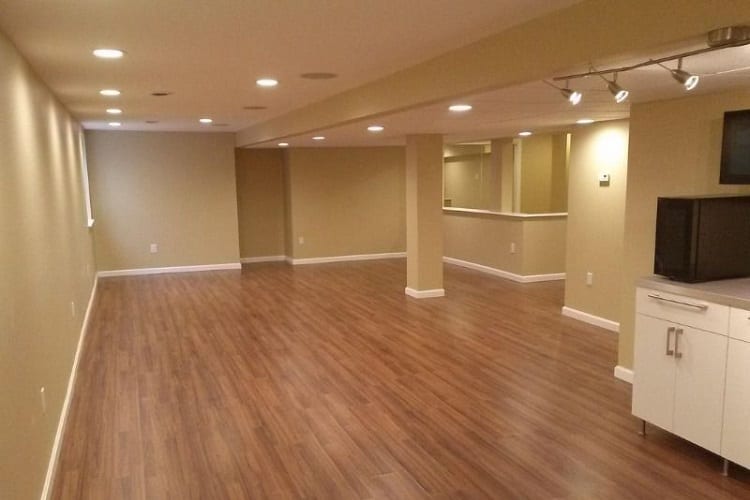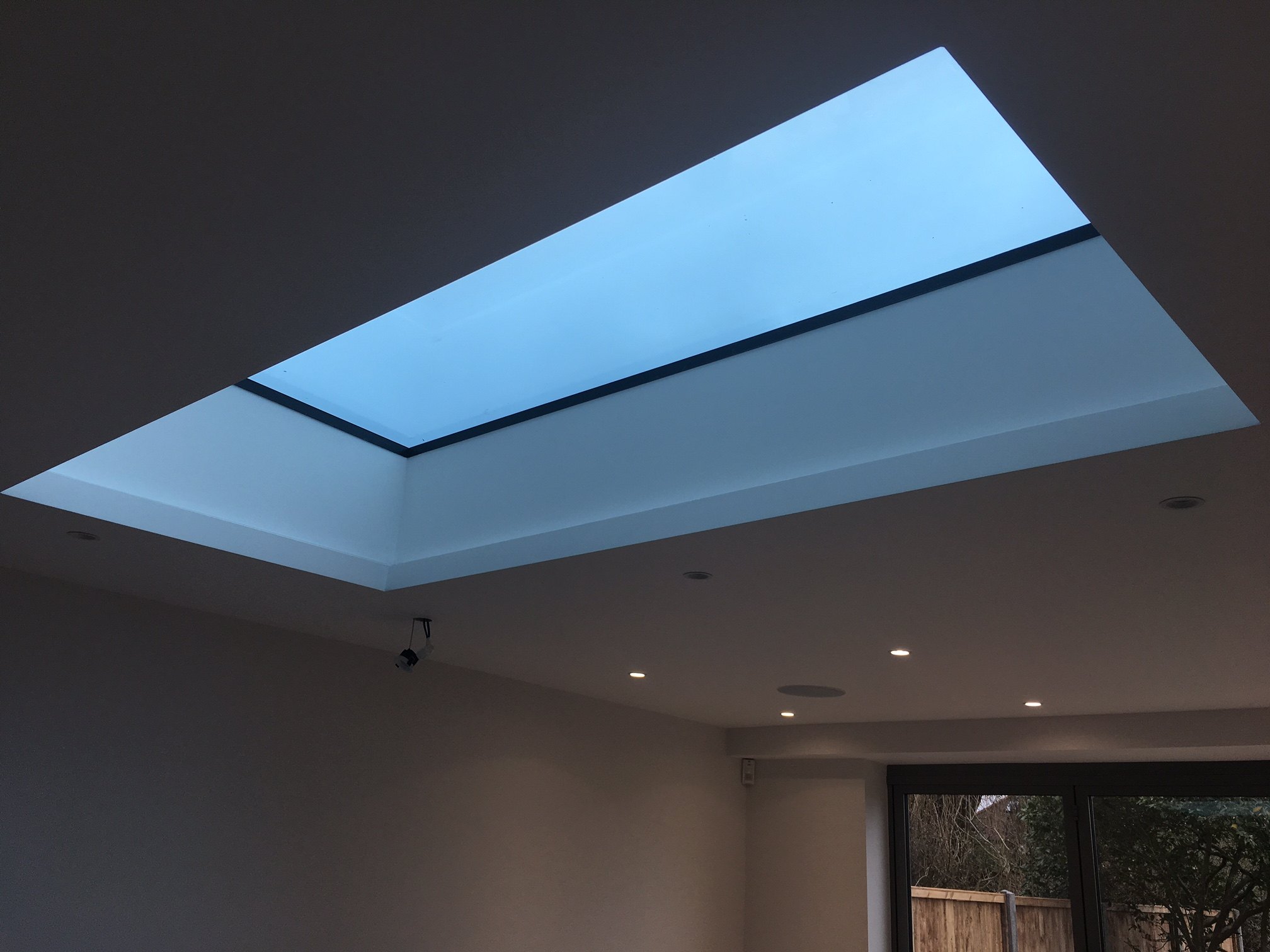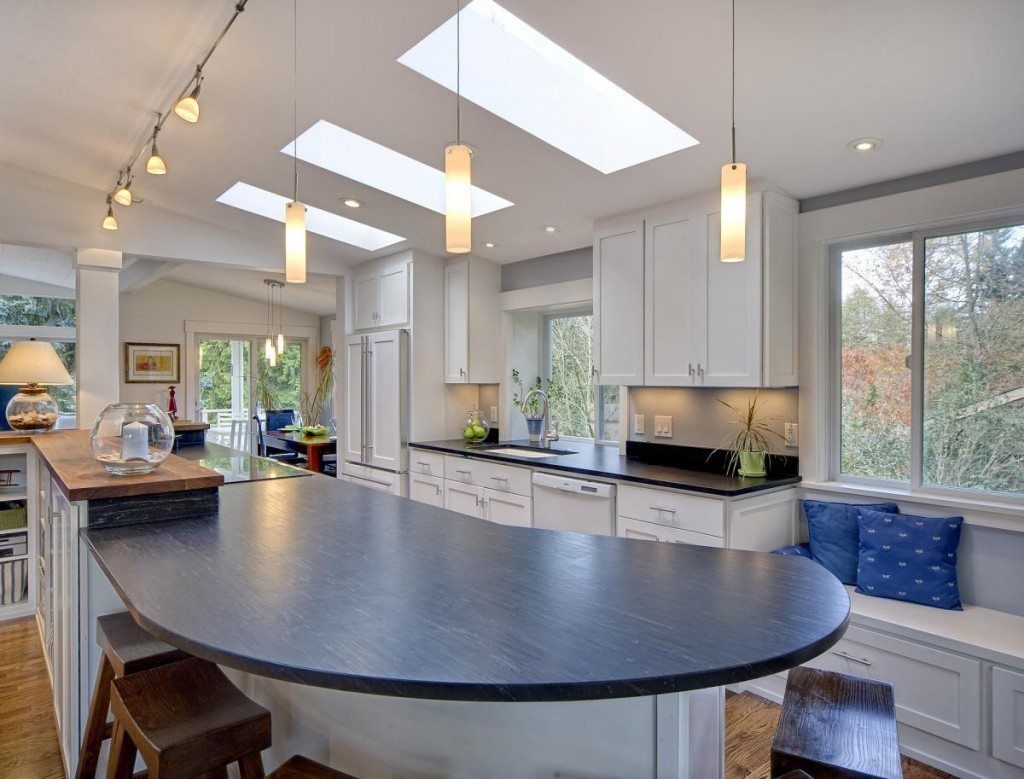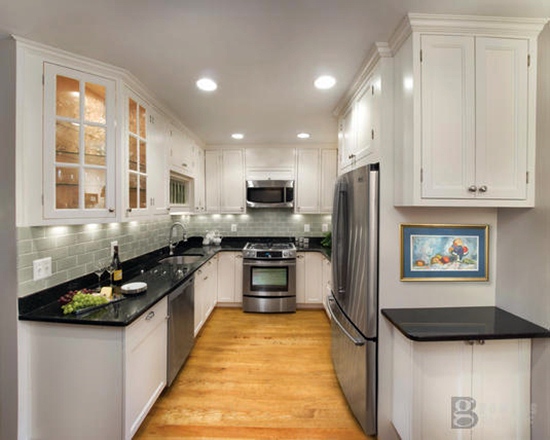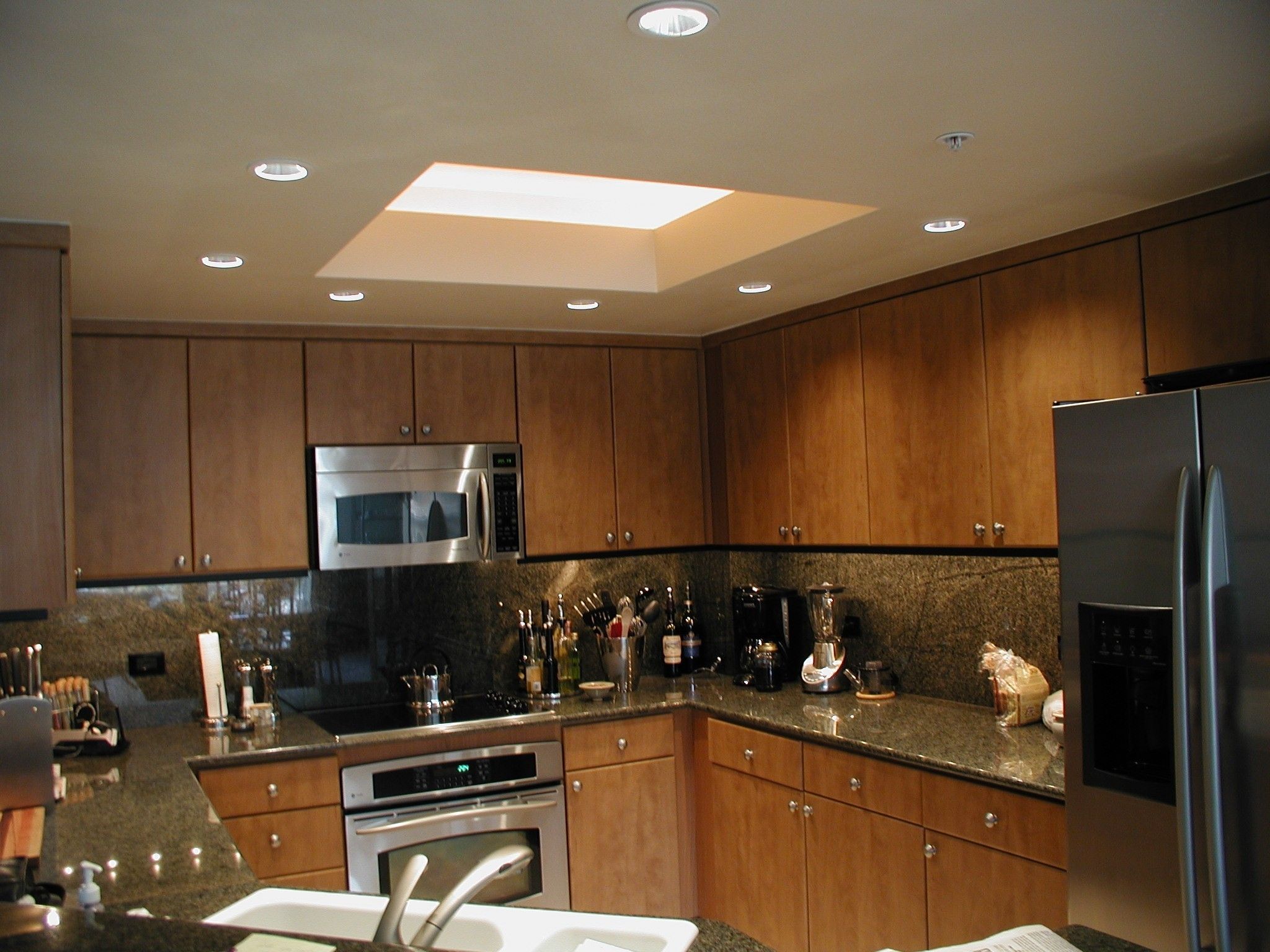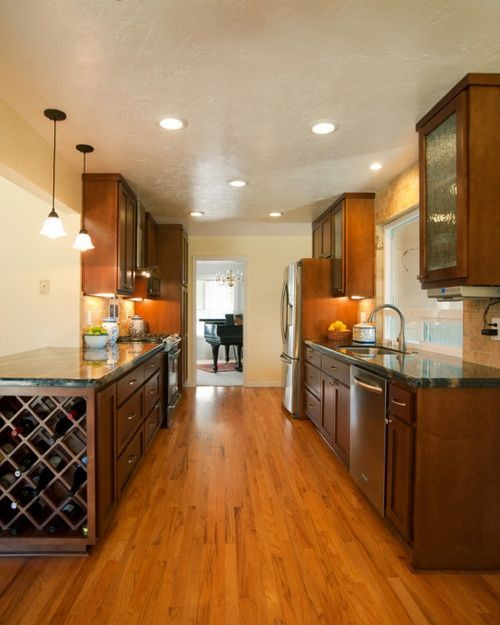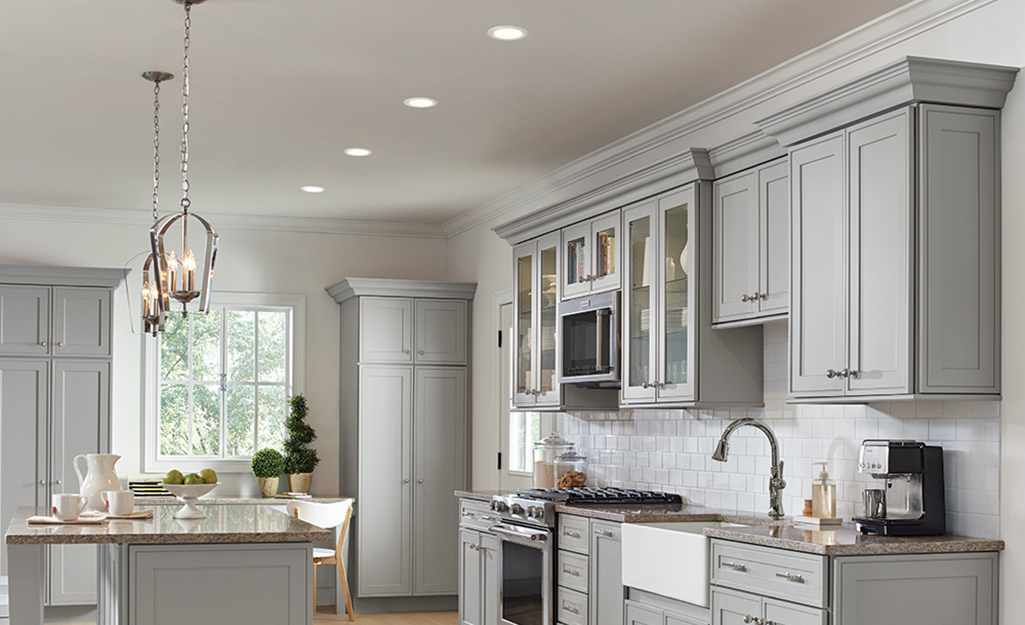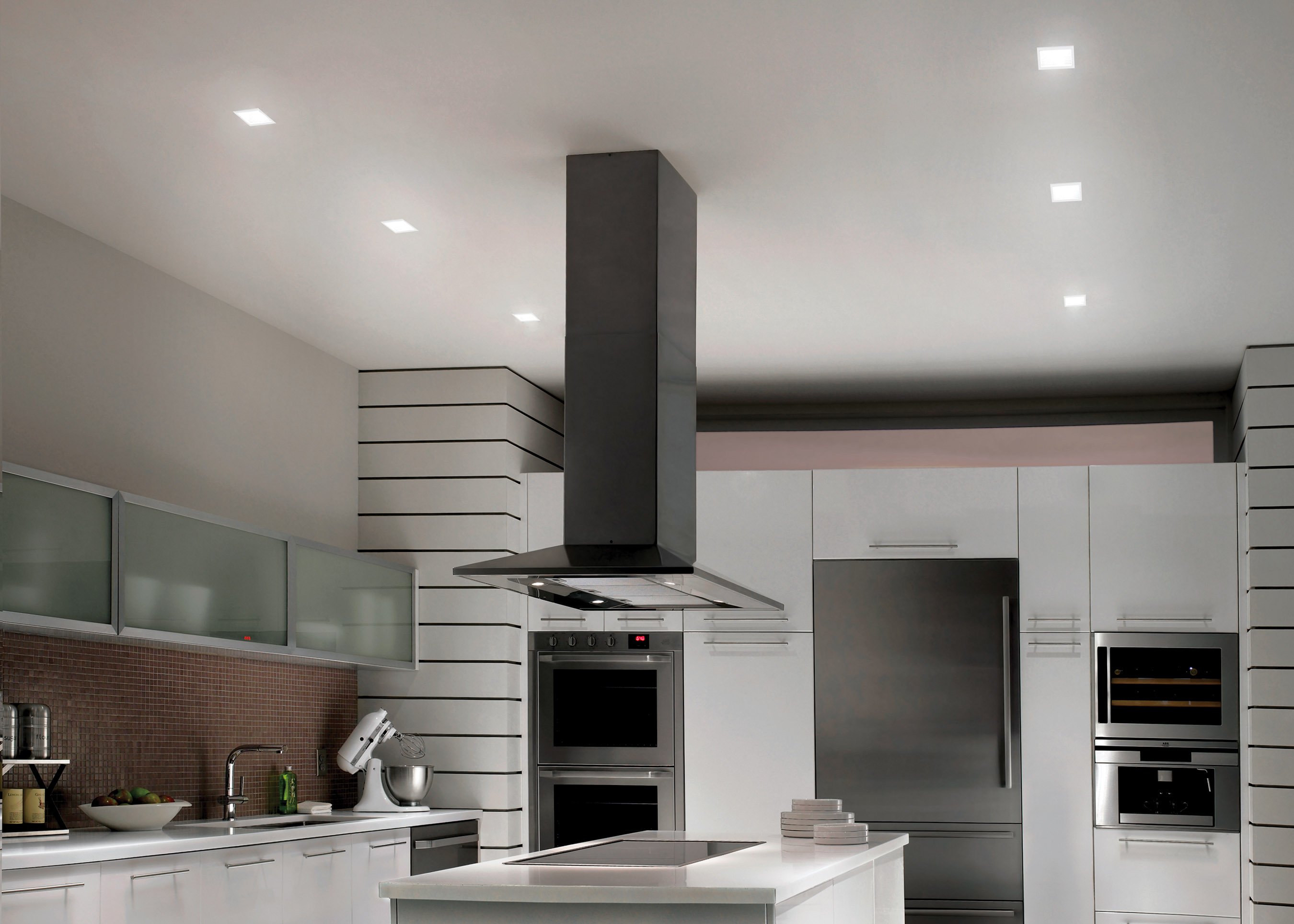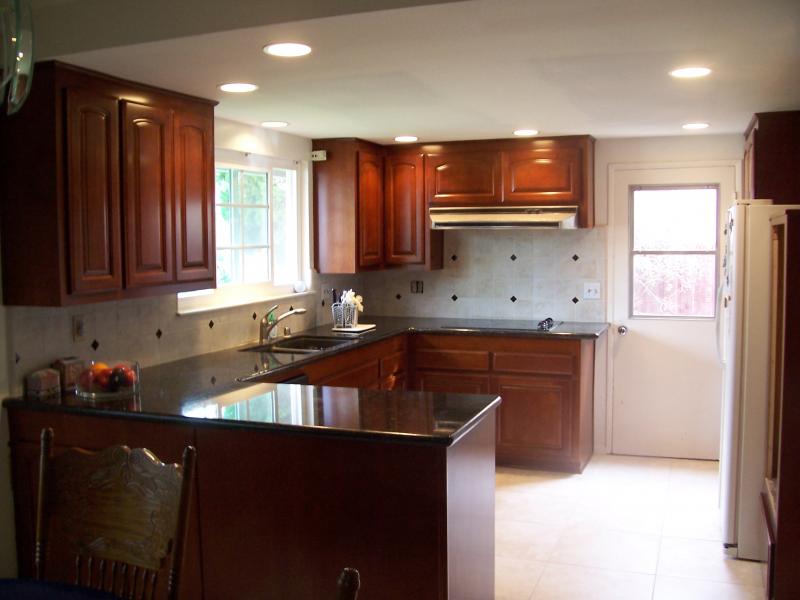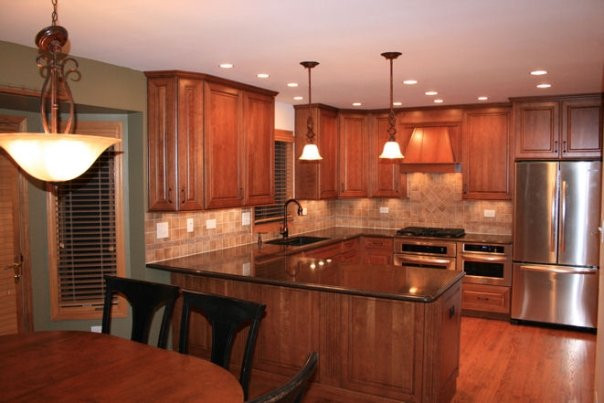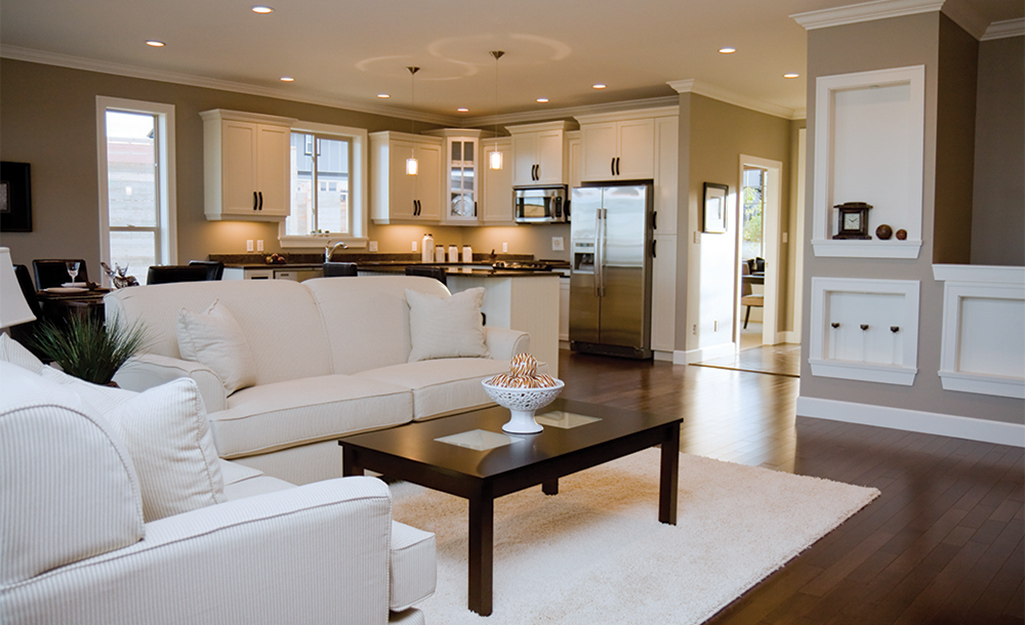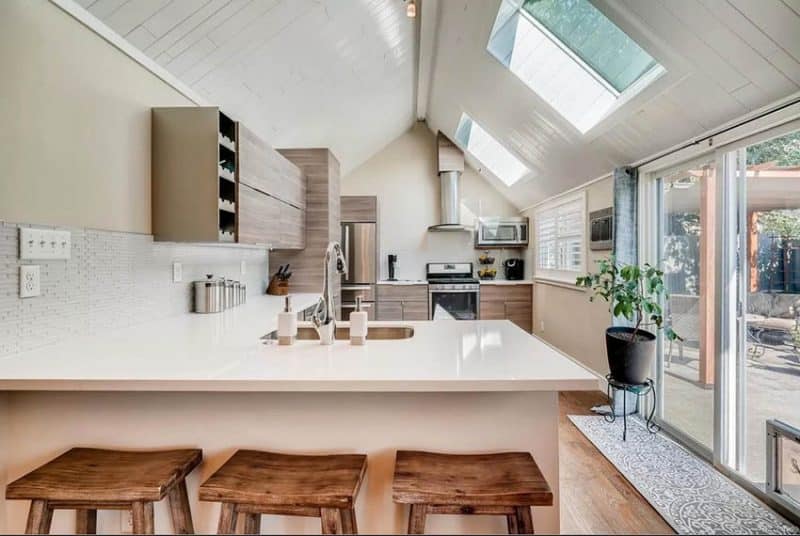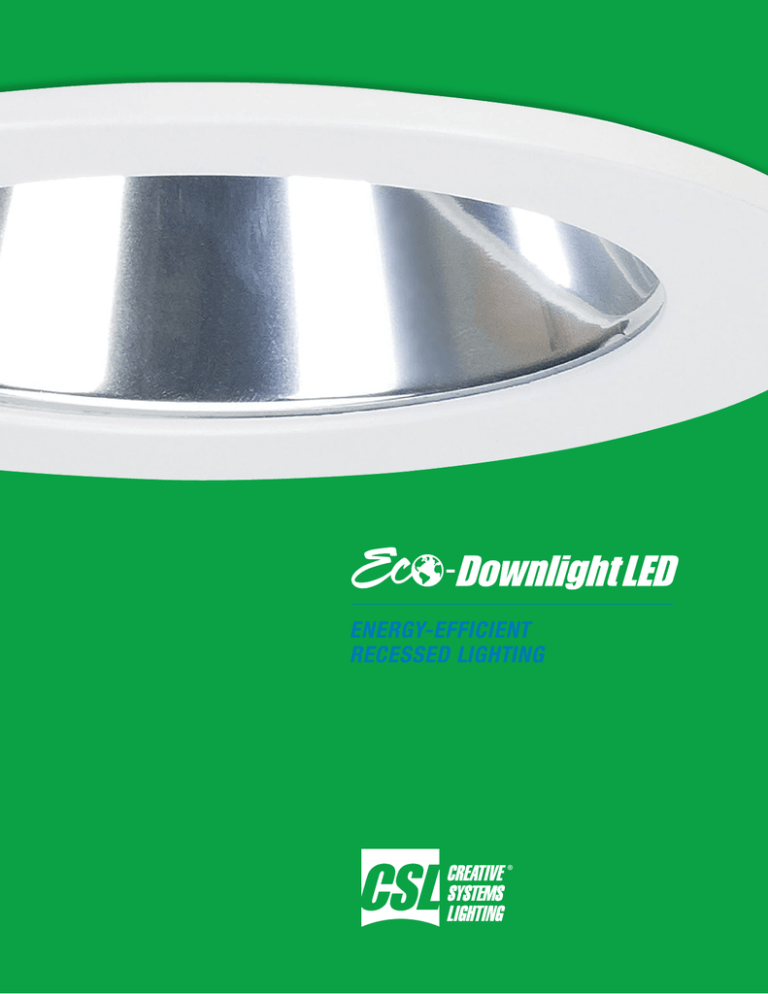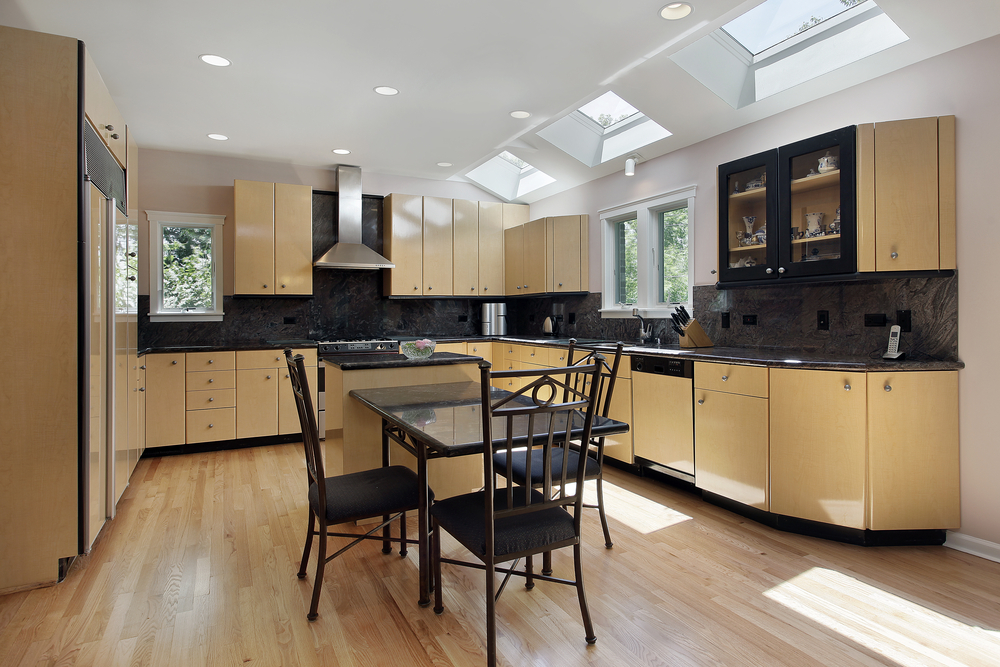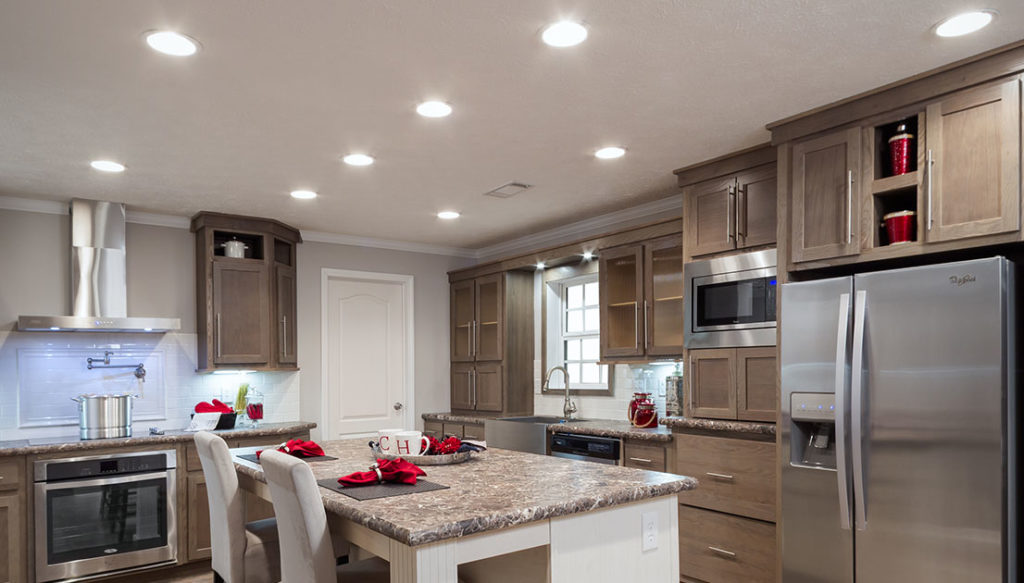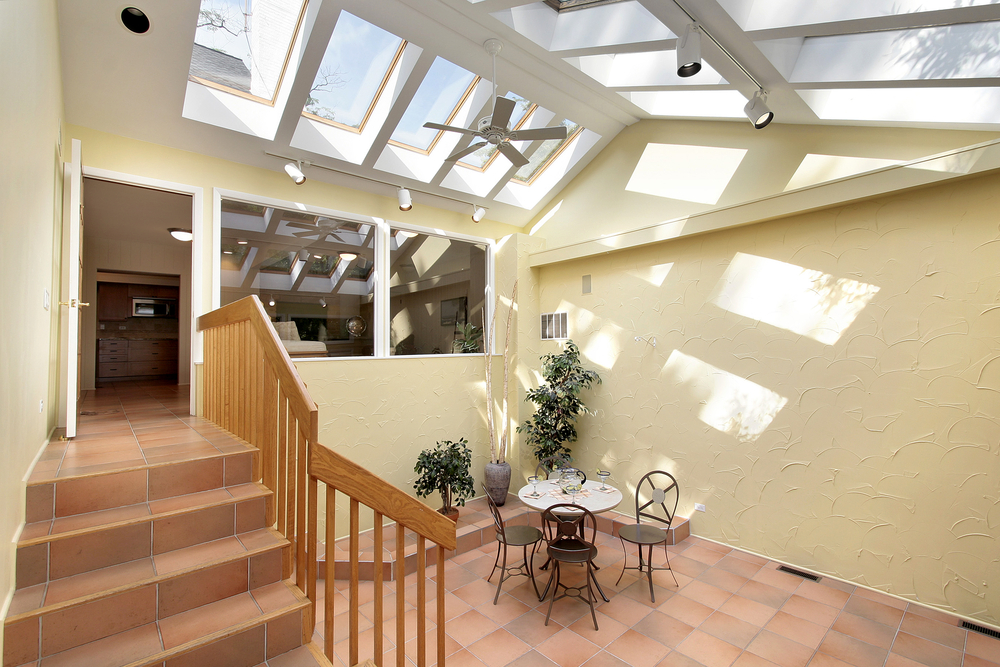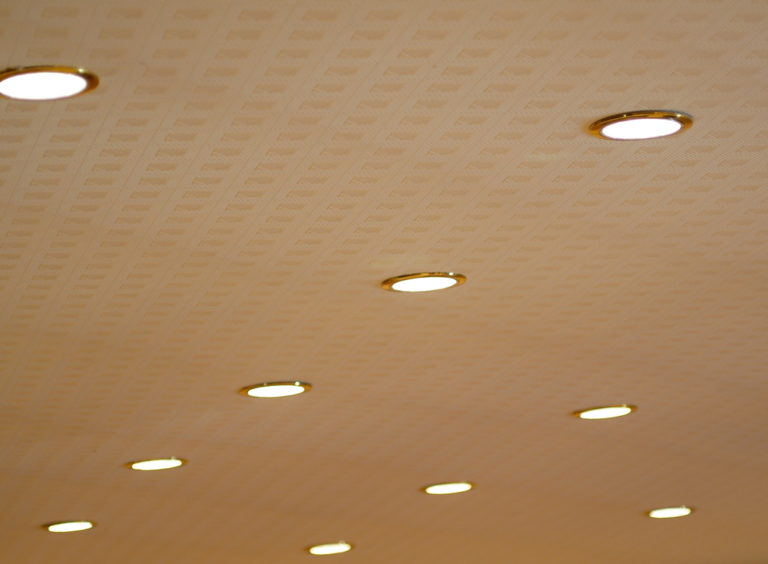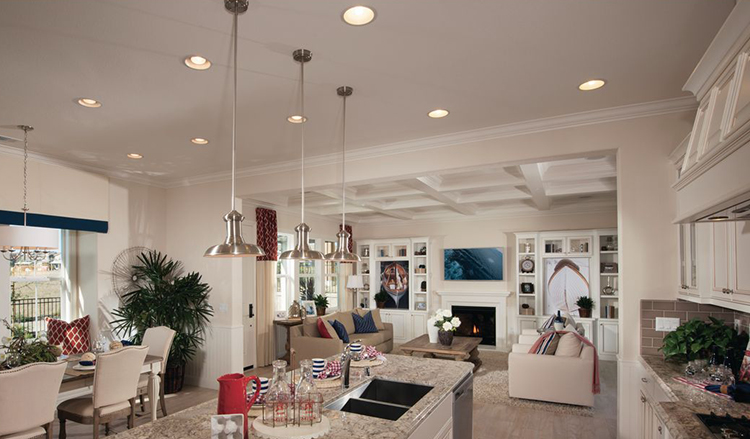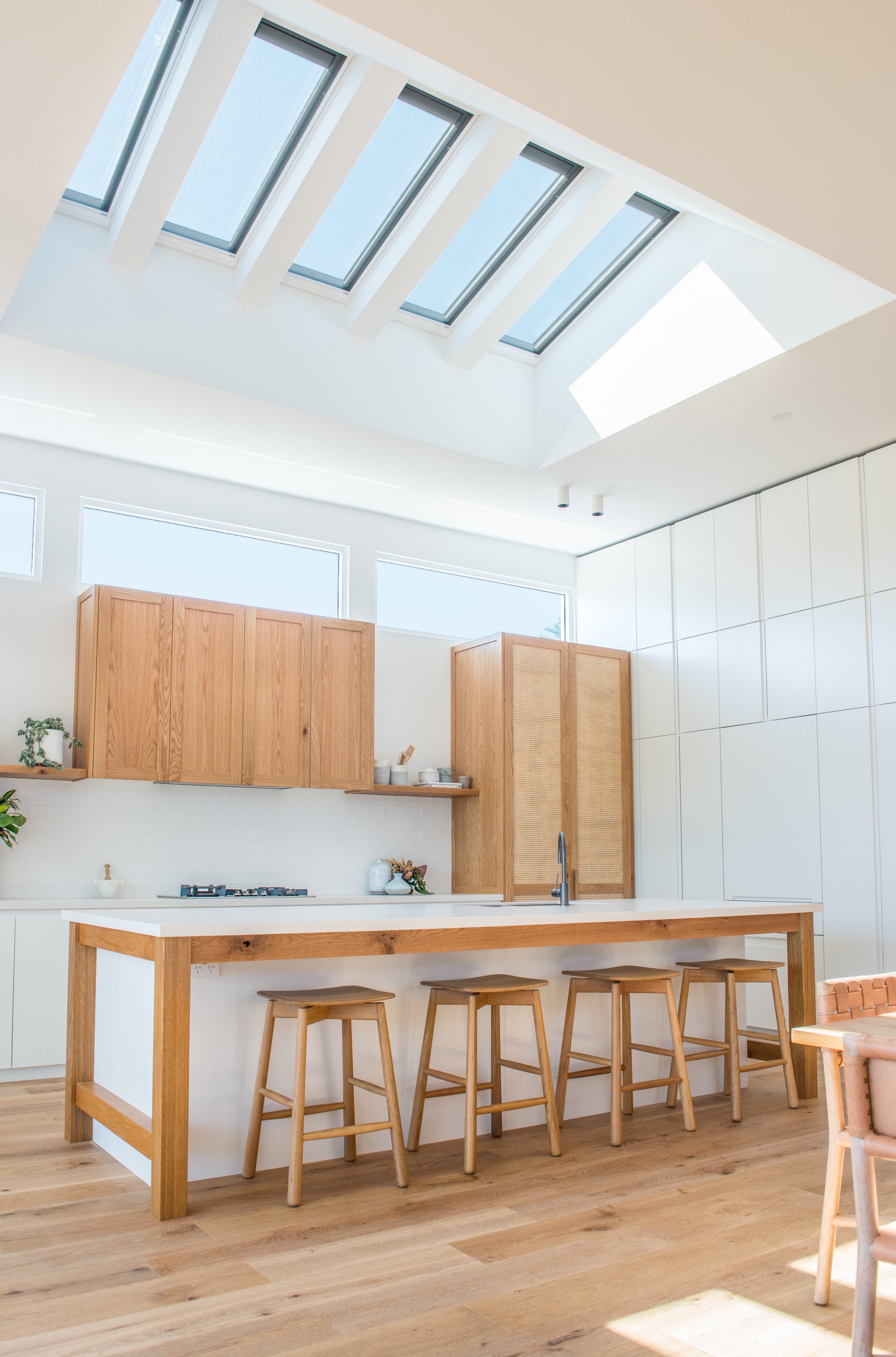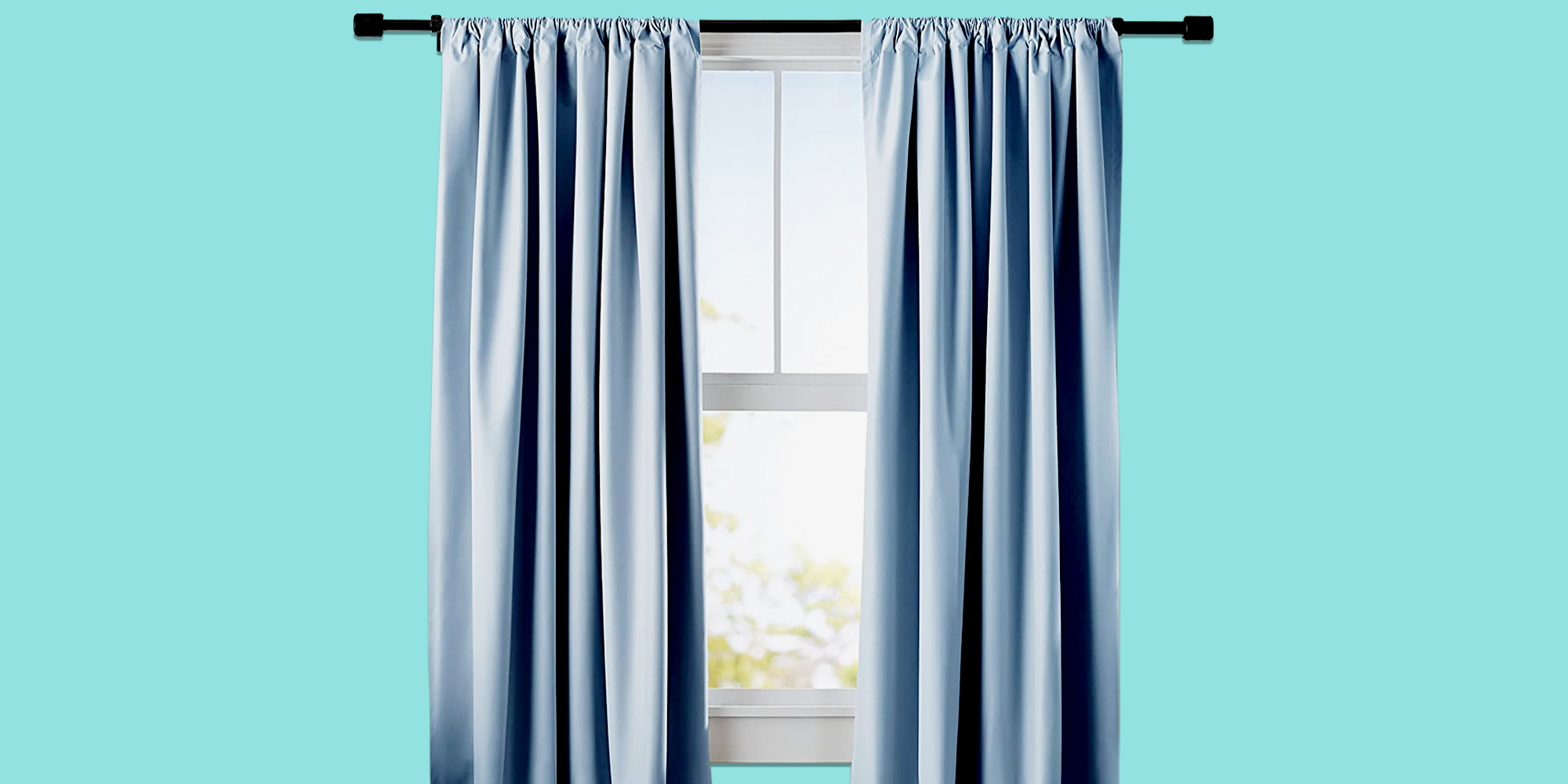1. Recessed Lighting for Kitchen Skylights
When it comes to designing your kitchen, the lighting is a crucial element that can make or break the overall aesthetic and functionality of the space. One popular lighting option for kitchens is recessed lighting, which provides a sleek and modern look to any room. But what about combining recessed lighting with kitchen skylights? This unique combination offers the perfect balance of natural and artificial light, creating a warm and inviting atmosphere in your kitchen.
With kitchen skylights, you can bring in natural light from above, which helps to brighten up your space and make it feel more spacious. However, relying solely on skylights for lighting may leave your kitchen feeling dim and lacking in the evenings or on cloudy days. This is where recessed lighting comes in - it provides the necessary task lighting for cooking and food prep, while also adding an extra layer of ambient lighting to create a cozy and inviting atmosphere.
So why choose recessed lighting for your kitchen skylights? For starters, recessed lights are sleek and subtle, making them a perfect complement to the clean lines and open feel of skylights. Additionally, they are energy-efficient and long-lasting, making them a practical and cost-effective lighting option.
If you already have skylights in your kitchen, adding recessed lighting is a simple and easy way to elevate the look and functionality of your space. And if you are planning a kitchen renovation, consider incorporating both skylights and recessed lighting into your design for a truly stunning and well-lit kitchen.
2. Kitchen Skylight Recessed Lighting Ideas
There are several ways to incorporate recessed lighting into your kitchen skylights, depending on the size and layout of your space. Here are a few ideas to get you started:
• Task Lighting: Place recessed lights directly above your work areas, such as the sink, stove, and countertops. This will provide focused and bright light for cooking and food prep.
• Ambient Lighting: For a softer and more subtle lighting effect, install recessed lights around the perimeter of your skylights. This will create a warm and inviting glow throughout your kitchen.
• Accent Lighting: Use recessed lights to highlight specific features or areas in your kitchen, such as a beautiful backsplash or a decorative display cabinet.
• Dimmer Switches: To further enhance the ambiance in your kitchen, consider installing dimmer switches for your recessed lights. This allows you to adjust the brightness and create the perfect lighting for any occasion.
3. Best Recessed Lighting for Kitchen Skylights
When it comes to choosing the best recessed lighting for your kitchen skylights, there are a few factors to consider:
• Size: Make sure to choose recessed lights that are proportionate to your skylights and the size of your kitchen. A general rule of thumb is to have one recessed light for every 4-6 square feet of ceiling space.
• Bulb Type: LED bulbs are the most energy-efficient and long-lasting option for recessed lighting. They also emit a warm and natural light that is perfect for kitchens.
• Trim Style: The trim of your recessed lights can add a touch of style to your kitchen. Choose from a variety of finishes, such as brushed nickel, black, or white, to complement your skylights and overall kitchen design.
• Placement: The placement of your recessed lights will depend on the layout of your skylights and any other ceiling fixtures. Be sure to plan out the placement in advance to ensure a balanced and well-lit space.
4. Installing Recessed Lighting in Kitchen Skylights
If you are adding recessed lighting to your existing kitchen skylights, it is best to hire a professional electrician to ensure proper installation. However, if you are comfortable with DIY projects, here are the basic steps to follow:
• Step 1: Plan out the placement of your recessed lights, taking into consideration the size and layout of your skylights and any other ceiling fixtures.
• Step 2: Turn off the power to the room and remove any existing light fixtures or ceiling panels.
• Step 3: Use a hole saw to create holes in the ceiling where you want to install the recessed lights. Make sure to follow the manufacturer's instructions for the size of the holes.
• Step 4: Run electrical wiring from an existing power source to each hole and connect it to the recessed light fixtures. Again, if you are not comfortable with electrical work, it is best to hire a professional.
• Step 5: Install the trim and bulbs for each recessed light, making sure they are securely in place.
• Step 6: Turn the power back on and test each light to make sure they are functioning properly.
5. Recessed Lighting Placement for Kitchen Skylights
Proper placement of your recessed lighting is essential for achieving the best lighting effect in your kitchen skylights. Here are a few guidelines to follow:
• Avoid placing recessed lights too close to the skylights: This can create a glare and make your kitchen feel too bright. Aim to have at least 1-2 feet of space between the lights and skylights.
• Consider the angle of the skylights: If your skylights are angled, make sure to position the recessed lights in a way that will not create shadows or uneven lighting.
• Balance the placement: Make sure to space out the recessed lights evenly throughout the kitchen to create a balanced and well-lit space.
6. Kitchen Skylight Recessed Lighting Design
The design possibilities with kitchen skylight recessed lighting are endless. Here are a few ideas to inspire you:
• All-White Kitchen: For a clean and modern look, pair white recessed lights with white skylights and cabinetry. This will create a seamless and cohesive design.
• Industrial Chic: For a more industrial vibe, choose black or brushed nickel recessed lights and pair them with exposed brick or wood accents.
• Warm and Cozy: Incorporate warm and inviting elements, such as wooden beams or a stone fireplace, and use recessed lighting with a warm bulb color to create a cozy and inviting atmosphere in your kitchen.
• Rustic Charm: Use recessed lighting to highlight rustic elements, such as a wooden farmhouse table or a vintage chandelier, for a charming and eclectic look.
7. Energy-Efficient Recessed Lighting for Kitchen Skylights
Incorporating energy-efficient recessed lighting into your kitchen skylights not only helps to reduce your energy consumption, but it also saves you money in the long run. LED bulbs are the most energy-efficient option, using up to 75% less energy than traditional incandescent bulbs. They also last significantly longer, meaning you won't have to replace them as often.
Additionally, choosing ENERGY STAR certified recessed lighting can further reduce your energy consumption and lower your utility bills. These lights have been rigorously tested and meet strict energy efficiency guidelines.
8. Recessed Lighting Options for Kitchen Skylights
When it comes to recessed lighting options for kitchen skylights, there are a few different types to choose from:
• Fixed Recessed Lights: These lights are stationary and cannot be adjusted once installed. They are a great option for task lighting and ambient lighting.
• Adjustable Recessed Lights: These lights can be tilted or swiveled to direct the light in a specific direction. They are perfect for accent lighting or highlighting certain areas or features in your kitchen.
• Shower Trim Recessed Lights: These lights are designed to be used in damp areas, such as above a shower or bathtub. They have a protective cover that prevents moisture from entering the fixture, making them a great option for kitchens with skylights that may be exposed to rain.
9. How to Choose the Right Recessed Lighting for Kitchen Skylights
With so many options for recessed lighting, it can be overwhelming to choose the right one for your kitchen skylights. Here are a few factors to consider:
• Style: Choose a recessed light that complements the style and design of your kitchen and skylights.
• Functionality: Consider the purpose of the recessed light (task, ambient, or accent lighting) and choose one that will serve its intended purpose in your kitchen.
• Size: Make sure to choose a recessed light that is proportionate to your skylights and the size of your kitchen.
• Budget: Recessed lighting can range in price, so consider your budget when making your selection.
10. Recessed Lighting Installation Tips for Kitchen Skylights
Here are a few additional tips to keep in mind when installing recessed lighting in your kitchen skylights:
• Use a template: Create a template out of cardboard or paper to help you accurately measure and mark the placement of your recessed lights.
• Avoid overloading circuits: Make sure to distribute your recessed lights evenly on different circuits to avoid overloading them.
• Consider insulation: If your skylights are located in a ceiling with insulation, make sure to use insulation-contact (IC) rated recessed lights to prevent a fire hazard.
• Test before securing: Before fully securing your recessed lights in place, test each one to make sure they are functioning properly.
In conclusion, recessed lighting for kitchen skylights is a winning combination that provides both practical and aesthetic benefits. With the right placement, design, and installation, you can achieve a well-lit and stylish kitchen that will be the heart of your home for years to come.
How Recessed Lighting and a Kitchen Skylight Can Elevate Your House Design

Creating a Bright and Open Space
 When it comes to house design, lighting is an essential element that can make or break the overall aesthetic of a space. That's why incorporating
recessed lighting
and a
kitchen skylight
into your kitchen design can have a significant impact on the look and feel of your home. These two lighting options work together to create a bright and open space, adding depth and dimension to your kitchen.
When it comes to house design, lighting is an essential element that can make or break the overall aesthetic of a space. That's why incorporating
recessed lighting
and a
kitchen skylight
into your kitchen design can have a significant impact on the look and feel of your home. These two lighting options work together to create a bright and open space, adding depth and dimension to your kitchen.
The Benefits of Recessed Lighting
:max_bytes(150000):strip_icc()/kitchenrecessedlighting-GettyImages-155383268-dec5caad600541ff81cbdd6d06846c66.jpg) Recessed lighting, also known as can lights or downlights, are fixtures that are installed into the ceiling, creating a clean and streamlined look. These lights are ideal for kitchens as they provide a wide, even spread of light that illuminates the entire space. By
installing recessed lighting
in your kitchen, you can eliminate dark corners and shadows, making the space feel more spacious and inviting.
Recessed lighting, also known as can lights or downlights, are fixtures that are installed into the ceiling, creating a clean and streamlined look. These lights are ideal for kitchens as they provide a wide, even spread of light that illuminates the entire space. By
installing recessed lighting
in your kitchen, you can eliminate dark corners and shadows, making the space feel more spacious and inviting.
Introducing Natural Light with a Kitchen Skylight
 A
kitchen skylight
is a window installed in the ceiling, allowing natural light to flood into the room. This type of lighting option not only adds a unique design element to your kitchen but also has numerous benefits. Natural light can make a space feel larger and more welcoming, creating a warm and inviting atmosphere. It also has the added benefit of reducing the need for artificial lighting during the day, which can save you money on your energy bills.
A
kitchen skylight
is a window installed in the ceiling, allowing natural light to flood into the room. This type of lighting option not only adds a unique design element to your kitchen but also has numerous benefits. Natural light can make a space feel larger and more welcoming, creating a warm and inviting atmosphere. It also has the added benefit of reducing the need for artificial lighting during the day, which can save you money on your energy bills.
Combining Recessed Lighting and a Kitchen Skylight
 While both recessed lighting and a kitchen skylight have their individual advantages, combining the two can take your house design to the next level. By strategically placing recessed lights around the kitchen skylight, you can enhance the natural light and create a more balanced and cohesive lighting scheme. This combination not only adds functionality but also adds a touch of elegance and sophistication to your kitchen.
While both recessed lighting and a kitchen skylight have their individual advantages, combining the two can take your house design to the next level. By strategically placing recessed lights around the kitchen skylight, you can enhance the natural light and create a more balanced and cohesive lighting scheme. This combination not only adds functionality but also adds a touch of elegance and sophistication to your kitchen.
Conclusion
 Incorporating
recessed lighting
and a
kitchen skylight
into your house design can significantly elevate the look and feel of your kitchen. They work together to create a bright and open space, adding depth and dimension to your kitchen. With the added benefits of natural light and a balanced lighting scheme, these two lighting options are a must-have for any modern kitchen design. Consider incorporating them into your next house renovation project, and watch as your kitchen transforms into a bright and beautiful space.
Incorporating
recessed lighting
and a
kitchen skylight
into your house design can significantly elevate the look and feel of your kitchen. They work together to create a bright and open space, adding depth and dimension to your kitchen. With the added benefits of natural light and a balanced lighting scheme, these two lighting options are a must-have for any modern kitchen design. Consider incorporating them into your next house renovation project, and watch as your kitchen transforms into a bright and beautiful space.
